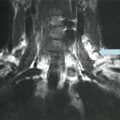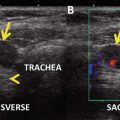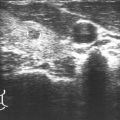Risk from T4 therapy
Response to therapy
Excellent (mU/L)
Indeterminate (mU/L)
Biochemically incomplete (mU/L)
Structurally incomplete (mU/L)
Minimal
0.5–2.0a
0.1–0.5
<0.1
<0.1
Moderate
0.5–2.0a
0.5–2.0a
0.1–0.5
<0.1
High
0.5–2.0a
0.5–2.0a
0.5–2.0a
0.1–0.5
Adverse Effects Associated with Suppressive T4 Therapy in the Elderly
While T4 suppressive therapy may reduce recurrence and mortality rates in individuals with high-risk DTC, there are inherent risks associated with iatrogenic hyperthyroidism. Suppressive thyroxine therapy may negatively impact quality of life [10]. Iatrogenic hyperthyroidism also adversely affects cardiovascular and bone health, particularly in the elderly.
It is unclear if endogenous hyperthyroidism and exogenous hyperthyroidism cause similar adverse event profiles. Serum free T4 levels are high normal or elevated in both situations, but it is uncommon for serum T3 levels to be high normal or elevated in iatrogenic hyperthyroidism, as compared to endogenous hyperthyroidism. The difference in serum T4/T3 ratios in endogenous and exogenous hyperthyroidism may thus result in different end-organ effects [11].
Cardiovascular Disease
Dysrhythmias
Elderly individuals with iatrogenic hyperthyroidism are at increased risk of dysrhythmias and cardiovascular (CV) disease. The elderly also tend to be less symptomatic than their younger counterparts and thus warrant heightened clinical suspicion [12].
The prevalence of atrial fibrillation (AF) in DTC patients 60 years and older has been estimated to be as high as 17.5 %, with paroxysmal AF more common than persistent AF [13]. A Scottish observational study including 17,684 patients (females 85.9 % with mean age of 60.3 years; males with mean age of 61.8 years; median follow-up 4.5 years) on levothyroxine for at least 6 months demonstrated that individuals with exogenously suppressed serum TSH levels of <0.03 mU/L were at increased risk for CV disease (adjusted HR 1.37; 95 % CI 1.17–1.60) and dysrhythmias (adjusted HR 1.6; 95 % CI 1.10–2.33) after adjustment for age, sex, previous thyroid condition, socioeconomic status, and history of diabetes mellitus. The subset of patients with low but non-suppressed serum TSH levels ranging from 0.04 to 0.4 mU/L did not have an increased risk of cardiac events [14].
Cardiovascular Mortality
There has been conflicting data regarding whether exogenous hyperthyroidism results in increased cardiovascular mortality. Bauer et al. found no difference in mortality rates between women on long-term thyroxine therapy and nonusers (relative hazard 1.11, 95 % CI 0.98–1.24, p ≤ 0.09), even when stratified by serum TSH (<0.5 mU/L vs. >5 mU/L). A prior history of hyperthyroidism, however, was associated with a small increase in all-cause and cardiovascular mortality [15]. In contrast, a population-based observational study (mean age 49 ± 14 years, median follow-up = 8.5 years) demonstrated an increase in CV mortality and all-cause mortality by 3.3- and 4.4-fold, respectively, in patients with DTC independent of age, sex, and CV risk factors. Each tenfold decrease in geometric mean serum TSH was associated with a 3.1-fold increase in CV mortality [16]. Yang et al. similarly observed that among thyroid cancer patients, cardiac disease and cerebrovascular disease were the most frequent causes of non-cancer mortality [17]. The mechanism for increased CV mortality is unclear, but is postulated to be related to an increased risk of AF, impaired diastolic function, and increased left ventricular mass, leading to increased risk of stroke, heart failure, and myocardial infarction, respectively [16].
Bone Health
Bone Mineral Density and Fracture Risk
Data regarding the effect of iatrogenic hyperthyroidism on BMD are conflicting, but largely suggestive of a decrease in BMD and increase in fracture risk in postmenopausal women. The majority of data have not shown compelling evidence of a significant change in bone health in premenopausal women or men treated with T4 suppressive therapy [18–20].
Bauer et al. prospectively followed 686 women at least 65 years of age with subclinical hyperthyroidism (both exogenous and endogenous) and demonstrated that women with a suppressed serum TSH level (≤0.1 mU/L) had a threefold increased risk of hip fracture (relative hazard, 3.6 [95 % CI, 1.0–12.9]) and a fourfold increased risk of vertebral fracture (odds ratio 4.5, 95 % CI 1.3–15.6) as compared to controls (serum TSH 0.5–5.5 mU/L) [21]. The Thyroid Epidemiology Audit and Research Study (TEARS) also demonstrated an increased risk of fractures in both individuals with suppressed serum TSH (<0.03 mU/L) (adjusted HR 2.02, 95 % CI 1.55–2.62) and elevated serum TSH (>4.0 mU/L) (adjusted HR 1.83, 95 % CI 1.41–2.37). Elevated serum TSH levels in the latter group were considered to be a marker for poor compliance with medical therapy. Similar to the pattern seen in cardiovascular events as previously described, individuals with low but non-suppressed serum TSH levels (0.04–0.4 mU/L) did not have an increased risk of fracture [14].
A meta-analysis including five population-based prospective studies demonstrated a nonsignificant increase in the risk of hip fractures (HR 1.38 [CI, 0.92–2.07]) and non-spine fractures when patients with endogenous and exogenous subclinical hyperthyroidism were pooled. The strength of the relationship between subclinical hyperthyroidism and fractures appeared stronger in the setting of a suppressed serum TSH (<0.1 mU/L), but only two studies provided such data [22]. These findings are in keeping with meta-analyses by Faber et al. and Uzzan et al. suggesting that T4 suppressive therapy results in bone loss at an annual rate of 1 % in postmenopausal women [23, 24]. Differences in studies may be partially explained by varying rates of thyroid hormone suppression and calcium intake in the studies [20].
Treatment
Calcium and bisphosphonates are useful in managing bone health in iatrogenic hyperthyroidism. Kung et al. demonstrated that calcium monotherapy (1000 mg/day) was effective in mitigating bone loss, while intranasal calcitonin offered little further benefit [25]. Panico et al. stratified 74 postmenopausal women with DTC and a history of low BMD (T score ≤ −2.5) into three groups based on the duration of T4 suppressive therapy of 3, 6, and 9 years, respectively. All individuals, including controls, were treated with bisphosphonates, calcium, and vitamin D for 2 years, and all demonstrated an increase in lumbar spine BMD. Bisphosphonates were most effective in increasing BMD in the lumbar spine and femoral neck in postmenopausal women receiving T4 suppressive therapy in the short term [26].
Stay updated, free articles. Join our Telegram channel

Full access? Get Clinical Tree






